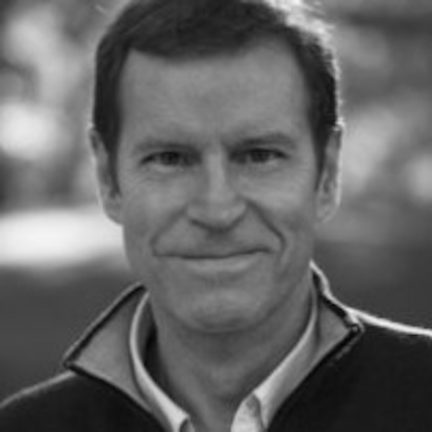Suicide and the Superficial Self

Have you ever thought of committing suicide? It’s okay if you have. In fact, I’d venture to say that it’s a fairly normal thing for most people to have considered at some point in their life – at least in the theoretical sense of it. To consider what it may actually take to go through with it, or what it may actually mean that you would want to. If you’re like me, you may even have occupied that place where it seemed to be a real option; and, like me, actually taken that option a number of times, in a manner of speaking.
When a famous person, someone we know, or someone we’ve just been acquainted with commits suicide, naturally there’s the sadness that accompanies such a profound personal tragedy, followed by that sense of futility. But there may also be a deep, underlying identification with a troubled fellow voyager; the understanding of suicide as a viable solution to what seems to be an utterly hopeless situation.
“When you commit suicide, you’re killing the wrong person.”
Anonymous
Obviously, I didn’t really commit suicide when I thought of it, but having passed through that “dark night of the soul,” I do understand the impulse – and not as an overwhelming urge to for the absolute, but instead as an overwhelming urge for absolution.
The Urge for Absolution
After all, the desire to ‘end it all’ often isn’t a wish to actually die, just a wish to end things the way they are.
In this sense, the suicide urge is a completely natural impulse that arises simultaneously from both deep despair and a kind of optimism in the eternal, the idea that a spiritual solution awaits our return. We’re searching for the source of relief, renewal, and regeneration.
It can actually indicate a profound kind of spiritual sanity and practical wisdom – the desire to return our battered soul into the care of a loving power, and rediscover our spiritual freedom, away from a world where our human shortcomings and ineffectiveness are constantly imposed on our simple search for happiness.
But please – don’t get me wrong on this point!
I’m not urging anyone to commit suicide. At least not in the way you may usually think of it.
Our misunderstanding of the suicide ‘process’ has a lot to do with our unwillingness to properly define death itself. As a person who’s unintentionally experienced a kind of reincarnation myself, I can tell you that we do live and die many times over–and not just in the physical sense of it.
For example, the child you once were – that innocent, playful, awakening soul – died outwardly in a sense, when the need to create an egoic interface to “the grown-up world” (and biological chemistry) raised its ugly head, all too soon. Likewise, your teenager was sacrificed to the demands of a life of responsibility. And as you get older, the young adult you once were has given way to a being of lesser physical ability (that’s one I really miss). The body I’m in now is heading down a stretch of road dotted with signposts for another turn-off up ahead. There’s always some form of death approaching. That’s just the way it is.
“Without dying to the world of the old order, there is no place for renewal, because…it is illusory to hope that growth is but an additive process requiring neither sacrifice nor death. The soul favors the death experience to usher in change. Viewed this way, the suicide impulse is a transformational drive.”
James Hillman
Suicide and the Soul
The author of that quote, James Hillman, (my late uncle, by marriage), was a brilliant (and very funny) guy – a teacher, author, Jungian analyst, former director of the Jung Institute in Zurich, and the creator of Archetypal Psychology. That quote is from his elegant, utterly amazing little book, Suicide and the Soul (Harper Colophon, 1964), in which he describes a lot of what I’m talking about here far more eloquently than I ever could, based on years of working with patients in states of personal crisis. Elsewhere in the book, he says,
“To put an ‘end to one’s life’ means to come to one’s end, to find the end or limit of what one is, in order to arrive at what one is not – yet.”
James Hillman
Personally, this required a number of very uncomfortable moments in my own life, where who and what “I thought I was,” lay in broken pieces on the ground before me. When my life, as it was, no longer made any sense – where it no longer worked. The person I was had stopped being a viably effective participant, and living that way doomed me to repetitive collisions with my own self-created obstacles to happiness and fulfillment. That’s a dark place, where the suicidal impulse arises. Naturally, I required a deliverance – a death – to make room for my own personal renewal.
So, I committed a kind of suicide – and I’ve done it a few times – the sort that I propose you embrace if you ever reach that impasse yourself. Not to actually physically kill yourself, but to set about killing the part of you that no longer works.
That false egoic interface – often the same one we constructed first as kids – has to be destroyed to allow a more authentic self to emerge and arise from the ashes like the mythical phoenix. That’s an archetype Uncle James may have liked.
While my late uncle speaks metaphorically, as an analyst, I speak as a ‘near death experiencer,’ so in what I know as a real, spiritual sense, we do live and die and live and die – on and on. Our deaths are necessary for our soul’s growth; every death is a suicide, of sorts, fashioned over time by our own designs. Life can be quite ruthless in pointing out the biggest flaws in those designs, but the awareness we gain is the gift that pain gives us. It becomes our job to change. This is the case at every level.
Fractal Motivation
We are all the creators of our own deaths, individually and collectively, and the suicide urge itself is a kind of fractal motivation – an urge that lives within every expression of consciousness taking part in our mysterious spiritual evolution. From plants, to animals, to us, to our earth, there is that sacrifice to growth, to our return, imprinted in our very core.
Meanwhile, our soul – the same playful soul of a child – continues to live on in wonder, willingness, and absolute surrender, even as we must slough off sheaths of outer lives. With that willingness, that faith, we can sacrifice our overly serious superficial selves; with our soul’s knowledge that our true self is never abandoned, we can bury “who we were supposed to be”– even if we don’t know who we are meant to become yet. It’s an uncomfortable state of grace, like the chaotic mess inside a chrysalis just before a butterfly emerges.
Kill the Right Person
So, please, don’t ever actually kill yourself – it’s a “permanent solution to a temporary problem.” But if you insist on it, make sure you kill the right person. Kill only the part of yourself that causes pain; the part that prevents you from being the creature of light and love you are truly meant to be. Bury your superficial self, christen a more authentic you, rise up, and spread your new wings.
The Three Questions With Don Miguel Ruiz

Everything we do is connected to an agreement we have made. This is the premise proposed by Don Miguel Ruiz, best-selling author, and renowned spiritual teacher. Ruiz has spent decades guiding people to personal freedom through his profound insights regarding the nature of human reality.
In “The Three Questions with Don Miguel Ruiz,” we get a glimpse of how we shape our own lives, consciously and unconsciously, through our interactions with others and the promises we make to them and ourselves. This discussion gives us pause to think about what we really know versus what we have learned from others.
The youngest of 13 children, Don Miguel Ruiz was born in rural Mexico to parents who practiced ancient Toltec traditions and used their healing abilities to uplift others. After graduating from medical school in Mexico City, Ruiz began practicing neurosurgery with his older brother in Tijuana.
Not long after, however, a near-fatal car accident completely altered his life’s course, leading him to leave his career in medicine in search of a more essential truth about life. With his mother’s guidance, steeped in traditional native teachings, he soon discovered his own path to awareness that evolved into a deep understanding of the physical universe and the virtual world of the mind.
Ruiz’s self-discovery led him to publish a number of highly successful books, including “Toltec Wisdom Series,” “The Four Agreements,” “The Mastery of Love,” “The Voice of Knowledge,” “The Four Agreements Companion Book,” “The Circle of Fire,” and “The Fifth Agreement.” The Toltec Wisdom books have sold more than 12 million copies, and have been published in 46 languages worldwide.
Don Miguel Ruiz’s message is simple yet profound: Our lives are guided and affected by information that is passed along generationally — right or wrong. But instead of simply adhering to the ideas of others, we need to “let everything we do and say be an expression of the beauty of our heart, always based on love,” and this will lead us to happiness, fulfillment, and helping others.







